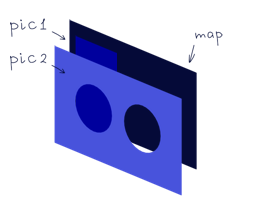Thanks for playing.
Yeah, there is a glitch. I wrote about it in the game description under 'IMPORTANT.' As you know, I can't do much else before the jam ends.
I'm already reworking the part with the sextant since it was (clearly) rushed. And so on. (I think I've already said this multiple times in the comments, so.)
The left side is static because that is how a sextant works. You measure the angle between the Earth (the horizon) and the stars.


